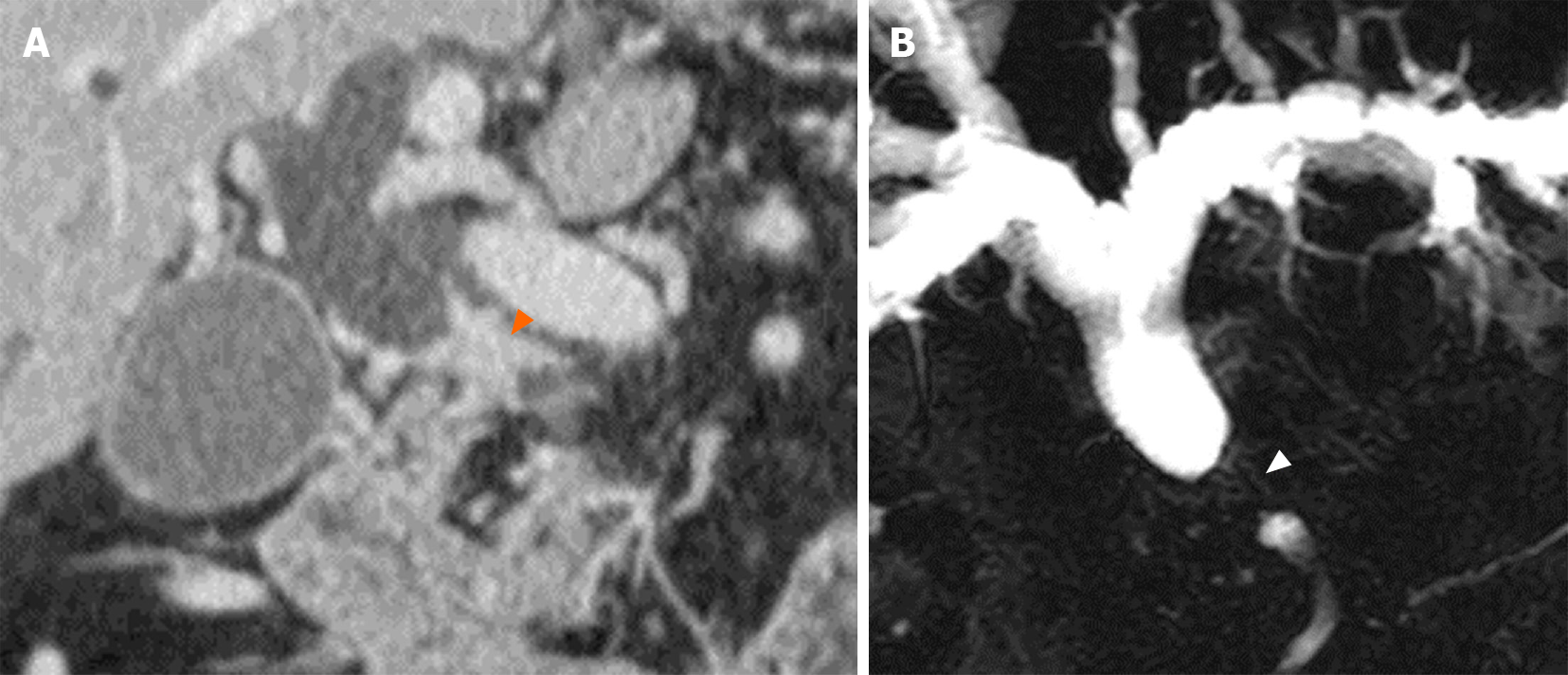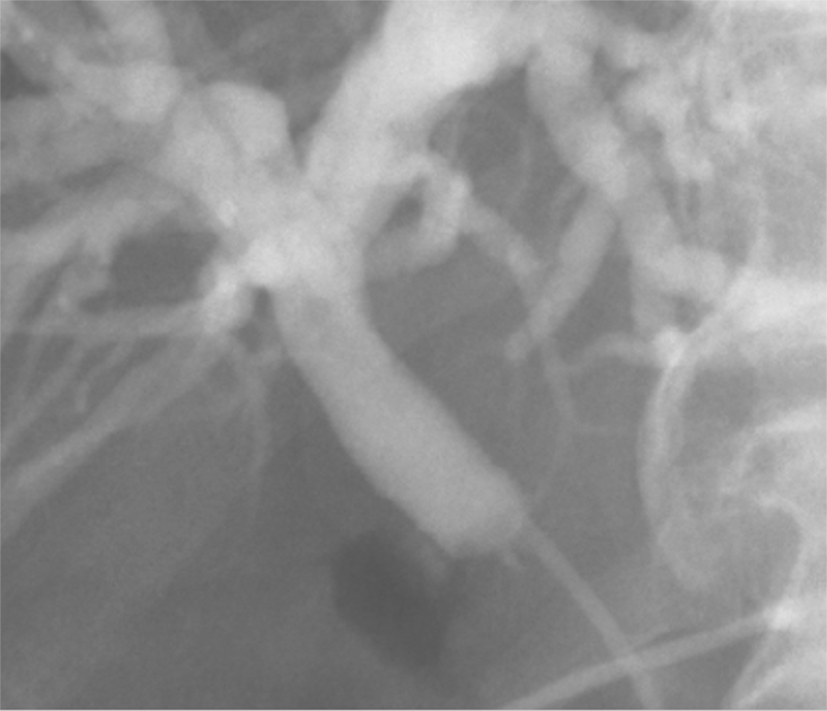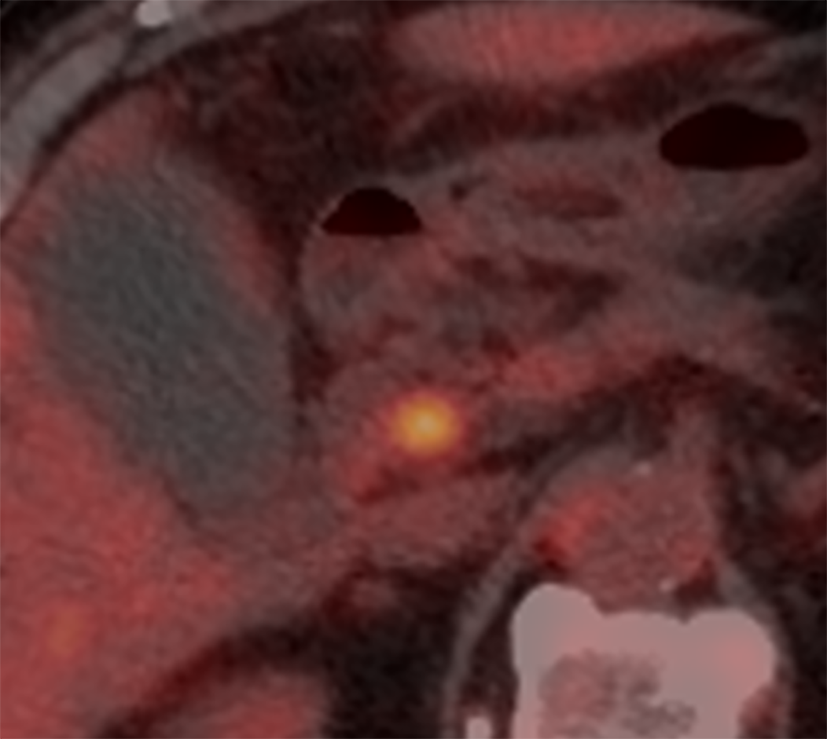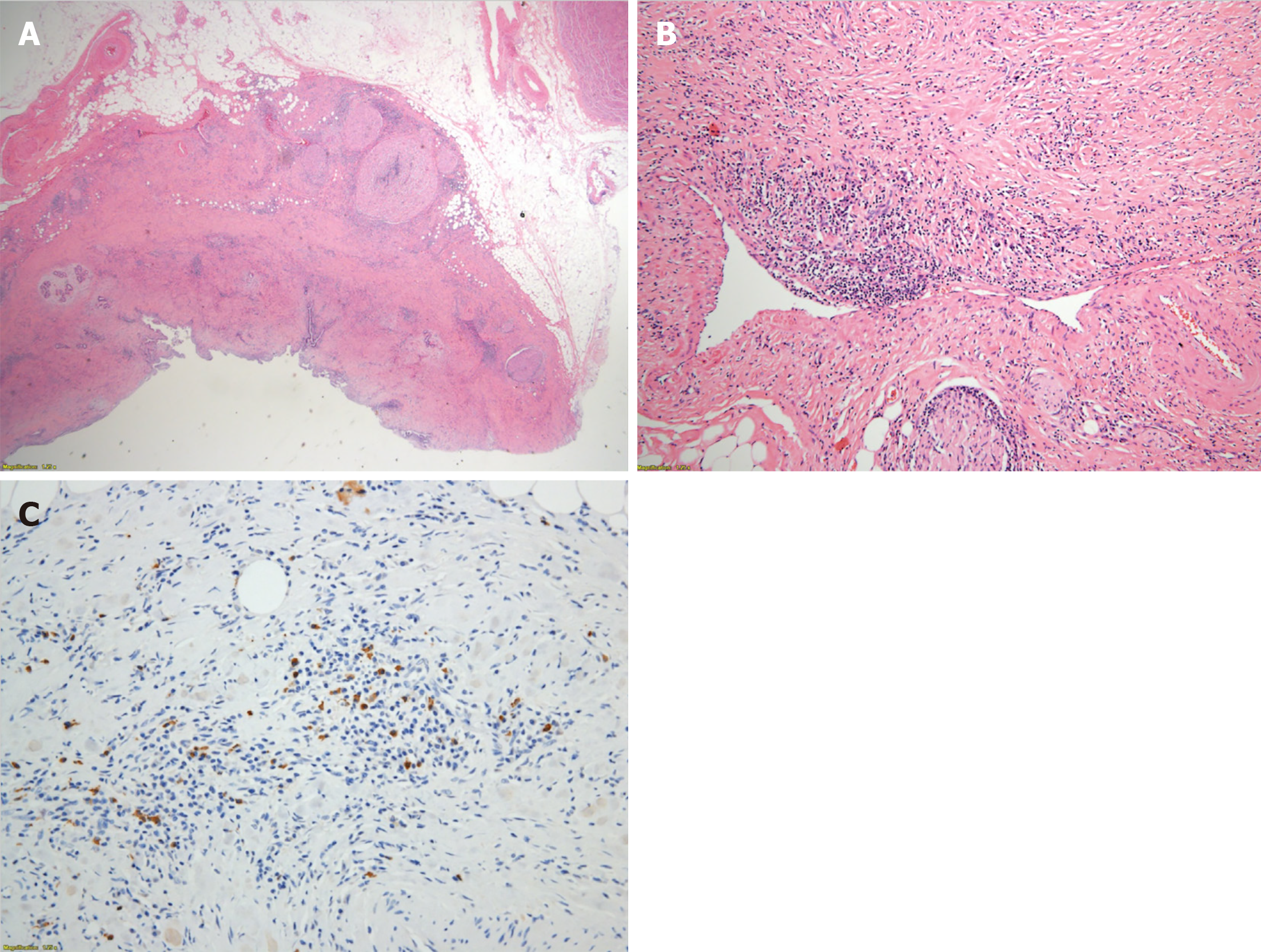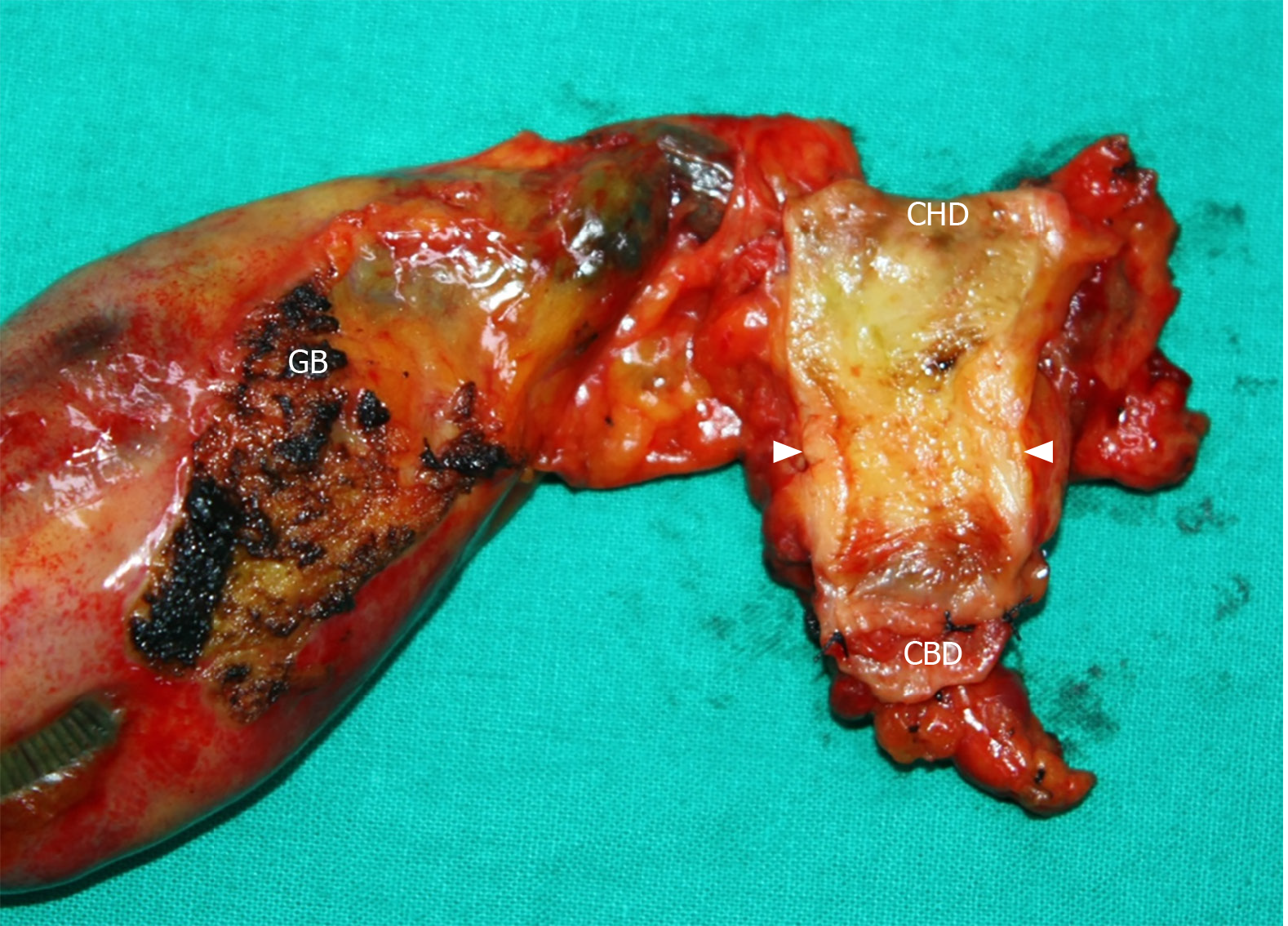Copyright
©The Author(s) 2021.
World J Clin Cases. Oct 16, 2021; 9(29): 8773-8781
Published online Oct 16, 2021. doi: 10.12998/wjcc.v9.i29.8773
Published online Oct 16, 2021. doi: 10.12998/wjcc.v9.i29.8773
Figure 1 Preoperative imaging.
A: Pancreas computed tomography indicates proximal common bile duct (CBD) stricture with wall thickening (arrow head) and marked dilatation of the proximal bile duct and gallbladder; B: Magnetic resonance cholangiopancreaticography also demonstrates short segmental stricture of the proximal CBD (arrow head) with diffuse dilatation of the peripheral bile duct.
Figure 2 Preoperative endoscopic cholangiogram.
Endoscopic retrograde cholangiopancreaticography confirms the 1 cm-lengthened segmental stricture at the proximal common bile duct with marked dilatation of the central bile duct.
Figure 3 Preoperative positron emission tomography-computed tomography.
A focal hypermetabolic lesion (SUVmax 4.2) around the proximal common bile duct is revealed without distant metastasis.
Figure 4 Histopathological examinations.
A: The thickened bile duct wall demonstrates a marked sclerosis with diffuse lymphoplasmacytes and some eosinophils infiltration; B: Obliterative phlebitis is apparent; C: Numerous IgG4+ cells are detected by immunohistochemical staining.
Figure 5 Gross findings of the specimen.
The tumor is shown to be located around the cystic duct orifice and is grossly about 2-cm long. Depth of invasion of the tumor seems to reach the pericholedochal adipose tissue. CBD: Common bile duct; GB: Gallbladder; CHD: Common hepatic duct.
- Citation: Song S, Jo S. Isolated mass-forming IgG4-related sclerosing cholangitis masquerading as extrahepatic cholangiocarcinoma: A case report. World J Clin Cases 2021; 9(29): 8773-8781
- URL: https://www.wjgnet.com/2307-8960/full/v9/i29/8773.htm
- DOI: https://dx.doi.org/10.12998/wjcc.v9.i29.8773













